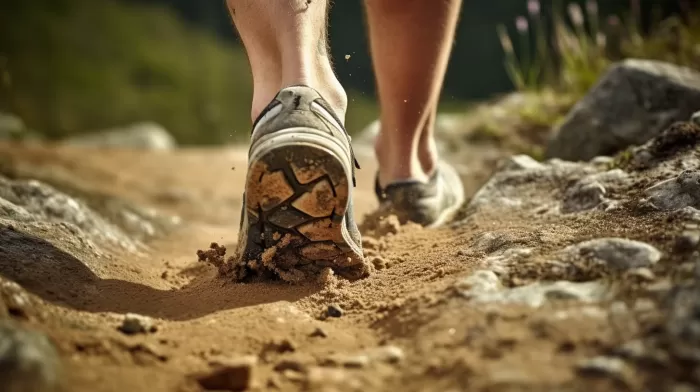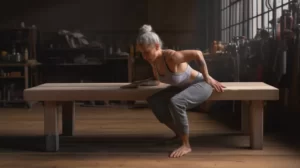Picture yourself running on a beautiful trail, feeling the breeze of fresh air, and connecting with the earth beneath you. This connection is only possible when you run or walk barefoot. Experts claim that barefoot running has some significant advantages over running with shoes, but you should move into it gradually to avoid injury.
Biomechanical Advantages of Barefoot Running
According to Daniel E. Lieberman, a professor of human evolutionary biology at Harvard University, barefoot runners have a notably different foot strike compared to shod runners (those who wear shoes). By landing on the middle or front of the foot, the impact collision experienced by barefoot runners is much less than heel-striking shod runners.
In working with groups of runners from both the United States and Kenya, Lieberman and his colleagues found that while over 75 percent of American shod runners heel-strike, creating a significant collision force, barefoot runners tend to land with a bouncier step toward the middle or front of the foot. The study included individuals who had always run barefoot, those who had always worn shoes, and those who had transitioned from shod running to barefoot running.
Reducing Collision Forces: Learning from the Pros
By analyzing the techniques of lifelong barefoot runners, we can learn how to reduce the collision forces experienced during running. Researcher Madhusudhan Venkadesan explains that heel-striking is painful for those running barefoot or in minimal shoes due to the large collisional force that occurs each time the foot lands on the ground. In order to avoid this impact, barefoot runners tend to point their toes more at landing, which reduces the effective mass of the foot and provides a more compliant, springy leg.
Lieberman points out that our ancestors have been endurance running for millions of years, spending most of that time either barefoot or in minimal footwear, such as sandals or moccasins. The modern running shoe, with its cushioned heel, wasn’t invented until the 1970s.
Ease into the Transition
For those of us raised wearing shoes, the transition to running barefoot or in minimal footwear should be approached with caution. Modern running shoes are designed to make heel-striking feel comfortable by cushioning the force of the impact. However, experts are increasingly finding that this comfortable feeling is deceiving, as the excess cushioning may be doing more harm than good over time.
Running barefoot uses different muscles, so if you’ve been heel-striking your entire life, you will need to slowly build strength in your calf and foot muscles to adjust to the new technique.
Tips for Transitioning to Barefoot Running
- Take it slow and listen to your body: Start with short distances and gradually increase your mileage. Give your body time to adjust and always stop if it starts to hurt.
-
Work on your form: Focus on a proper running technique: land on the mid-foot or forefoot, maintain a straight posture, and relax your knees.
-
Choose the right terrain: Start on soft surfaces like grass or sand since these will provide a natural cushion for your feet. As you gain confidence, you can explore other types of terrain.
-
Build strength and flexibility: Include strength training and stretching exercises for your feet and lower leg muscles to support your transition.
-
Consider minimal footwear: If you’re not comfortable going completely barefoot, try minimal footwear such as minimalist running shoes or sandals.
-
Give your feet time to adapt: Allow time for your feet to form natural calluses for protection and wait for your body to learn how to avoid discomfort naturally.
Running barefoot requires a change in technique and a gradual transition, but the benefits are undeniable. Through practice and patience, you will tap into the power of your body’s natural biomechanics. So, kick off those shoes, free your feet, and experience the joy of running barefoot.



